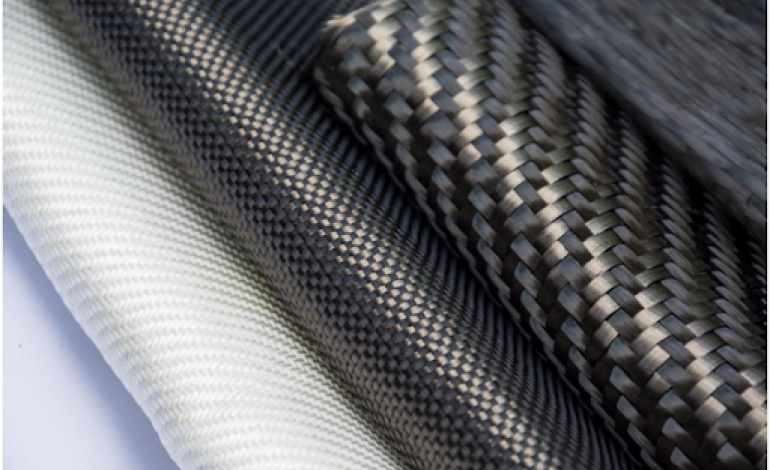There are many terms related to the carbon fiber industry that are generally misunderstood. Modulus of elasticity, or carbon fiber´s stiffness, is among the terms that cause the most confusion as some manufacturers will pitch ultra-high-modulus carbon fiber products implying that their quality is superior. But is it?
Today, we will try to dispel any misconceptions around this important aspect of carbon fiber production, and how different options might affect the quality and performance of carbon fiber products.
What Is Modulus Of Elasticity?
Solid objects tend to have some degree of elasticity or resistance to non-permanent deformation. As you apply force to an object (stress), it changes its length along the axis being measured (strain). Elastic objects tend to return to their original length or shape, while rigid objects tend to break or fail. This elasticity is measured in modulus: the higher the modulus of elasticity, the greater the stress necessary to deform the material. Modulus is not to be confused with material strength which measures the stress necessary to break the material. In general, stiffer fibers tend to be more sensible to tensile forces.
Carbon fiber products come in various degrees of stiffness, all of them obtained by varying the way fibers are woven into the sheet during the manufacturing process. However, a higher modulus of elasticity does not mean higher quality.
There are uses for less rigid but stronger carbon fiber products. The first one that comes to mind is cost; standard modulus carbon fiber products tend to cost much less to produce, and they often benefit more from tensile strength than from stiffness.
In fact, standard modulus carbon fibers are usually high-quality. So, what changes?
Standard modulus carbon fibers have higher tensile strength. It means that they have a lower modulus of elasticity but are more resistant to impact, making them ideal for most applications except where stiffness must be prioritized above everything else.
Today´s adoption of carbon fiber products for everyday use is largely due to the versatility and cost-effectiveness of standard modulus carbon fiber. This incredible material is being used in many industries; from automobile parts to watches and clothes made of carbon fiber. These items benefit from the lightweightness and strength of carbon fiber, which is five times as strong as steel yet lighter than aluminum.
What Is Ultra-High Modulus?
Ultra-high modulus sheets are made using a different manufacturing process than standard modulus fibers. This process starts with a raw material called pitch fiber and produces sheets that are lighter and more rigid. However, the process is a lot more resource-intensive which translates to higher costs of production. Some manufacturers will create high-modulus products and market them as being of higher quality. It is then important to understand if the added stiffness and costs will actually provide increased performance or tangible advantages.
What Is The Impact Of Stiffness In Carbon Fiber Products?
It is important to note that carbon fiber products often need a mix of fiber compositions to remain functional and affordable at the same time. Products made solely from ultra-high-modulus do not necessarily bring benefits. They might even make the finished product more brittle than needed, all while increasing manufacturing costs.
Let’s take the biking industry as an example. High-performance bikes today are almost exclusively made of carbon fiber. Indeed, it is hard to find a titanium or aluminum body bike among the world’s top 10 competition bikes today. However, to get a high-performance frame or bike, you need to take a lot of factors into account which would guide you to use the right mix of fibers in the right places, facing the right directions.
A bike made exclusively of high-modulus sheets would be extremely lightweight, which is great for achieving high speeds and transferring pedal power efficiently to the road. After all, flexibility is the energy killer; every small deviation caused by stress applied to the frame absorbs forces instead of being directly channeled to the road.
Competitive bikers who are obsessed with performance and want to squeeze every drop of kinetic energy out of their rides create a high demand for stiffness. Manufacturers respond by creating ever more rigid frames and wheels.
But not every part of a bike benefits from increased stiffness. One of the key areas engineers focus on when designing frames is the cross-section of tubes. The reason is that expanding the tube diameter positively impacts stiffness, but using standard modulus carbon fiber would force the use of more material which increases weight. The solution is to use higher modulus carbon sheets to reduce internal tube diameter, lowering the weight, while increasing stiffness.
This certainly gets riders the desired energy efficiency and lightweightness. However, you can end up with a bike that is so stiff that it is a pain to ride.
To spare the rider the pain of directly absorbing the vibration from the uneven tarmac, bike manufacturers seek to decrease the stiffness of components along the vertical axis of the bike. Implementing high-modulus carbon fiber in every part of the frame would unnecessarily punish the driver and will give more reasons for the body to crack. Such a bike would be extremely brittle with very low tolerances for impact and wear.
Knowing which parts would benefit from that extra stiffness, and where to use more flexible carbon fiber sheets for increased strength, resistance, and comfort is an art in and of itself.
This does not mean that high-modulus carbon fiber is not without its uses. In environments that require increased hardness, and where every pound counts, high-modulus carbon fiber is irreplaceable. This is especially true in the aerospace industry, but there are other more mundane uses for this amazing material.
If you want more information about different types of carbon fiber, or want to know which one works best for your project or industry, contact the specialists at Protech Composites and they will make sure you get the right product for the right price.

